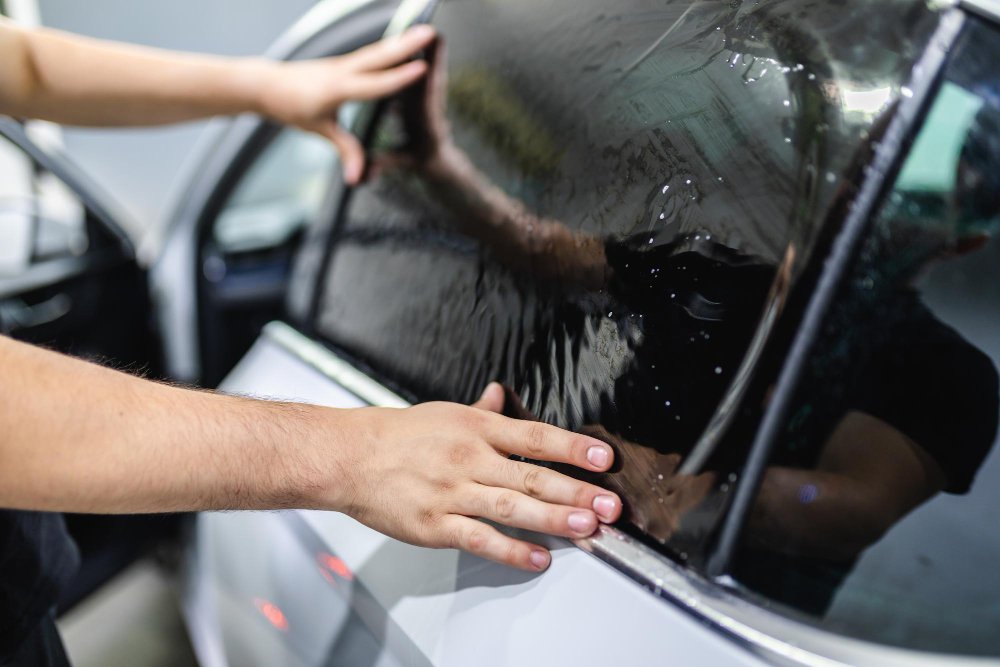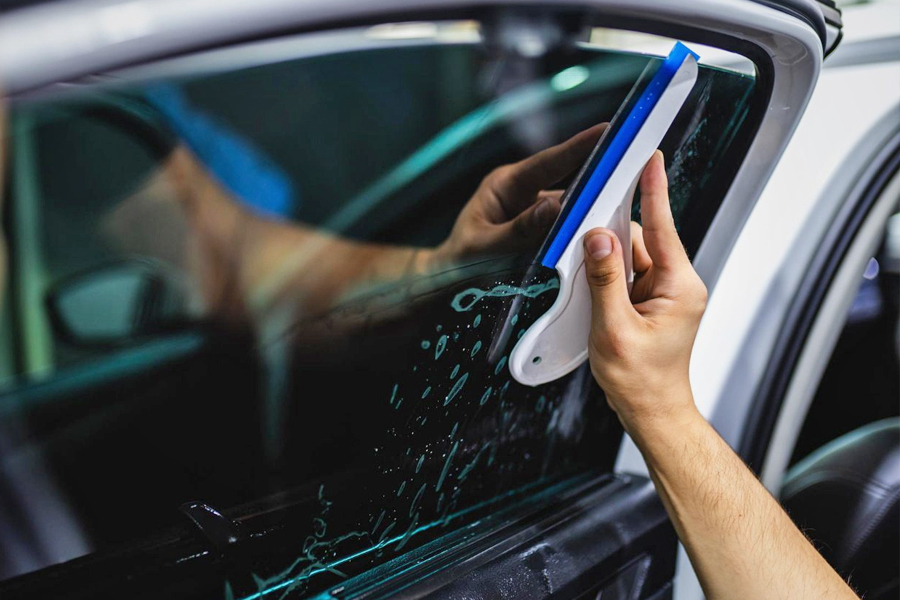Top-Rated Automobile Window Tinting Providers in Your Area
Top-Rated Automobile Window Tinting Providers in Your Area
Blog Article
Home Window Tinting Laws and Standards: What You Required to Know Prior To Tinting Your Cars And Truck
Prior to continuing with home window tinting for your vehicle, it is crucial to familiarize on your own with the diverse laws and guidelines that control this method throughout different states. These regulations determine the permitted levels of tint darkness, commonly measured by visible light transmission (VLT) percentages, and consist of particular stipulations for front windshields targeted at ensuring road safety and security. In addition, certain jurisdictions might offer clinical exceptions for individuals with certifying problems. Understanding these complexities can save you from possible lawful implications, however what are the specific regulations in your state?
Review of Home Window Tinting Laws
Home window tinting laws are frequently subject to variation across various jurisdictions, showing local guidelines and safety factors to consider. These laws determine the allowable levels of color darkness and reflectiveness on lorry home windows, making sure that vehicle drivers maintain adequate visibility while additionally safeguarding against dangerous UV rays and warm.
The majority of regulations identify window tinting based on the Visible Light Transmission (VLT) percent, which suggests the quantity of light that can travel through the window. Normally, reduced VLT portions represent darker tints. Regulations often distinguish between the front, side, and back windows, with stricter constraints related to the front windshield to improve safety and security for both the vehicle driver and other road individuals.
In addition, some territories enforce limitations on the reflectivity of the tint, preventing excessive glow that can hinder exposure. Exceptions to these legislations may exist for people with details medical problems calling for additional sun defense. Conformity with window tinting regulations is vital, as infractions can cause penalties, mandatory elimination of the tint, and possible boosts in insurance coverage costs. For that reason, it is crucial for automobile owners to acquaint themselves with regional regulations before continuing with home window tinting installments.
State-by-State Color Rules
Comprehending the particular window tinting policies in each state is important for lorry proprietors seeking to comply with the law. Each state in the united state has actually developed its own collection of guidelines controling home window tinting, which can differ considerably. These policies typically determine the allowable levels of color darkness, the kinds of windows that can be tinted, and any type of clinical exemptions that may apply.
For instance, states like The golden state have stringent limitations on tint darkness for front home windows, while others, such as New Mexico, might allow darker colors. Furthermore, specific states mandate specific presence percents for various home windows, consisting of the windshield, front side home windows, and back home windows. It is vital for auto proprietors to acquaint themselves with their state's legislations to avoid possible fines or charges.
Furthermore, some states might need a certification sticker label to be placed on colored windows, showing compliance with state laws. Failure to stick to these guidelines not just risks lawful consequences however can likewise influence security and exposure while driving. Automobile proprietors must carry out extensive study or seek advice from local authorities to make certain complete understanding and compliance with state-by-state color laws.
Allowed Color Types and degrees
Numerous car owners may be shocked to learn that permitted color degrees and types differ widely throughout different states. Each state has established its very own regulations regarding the acceptable darkness and reflectivity of window tint, usually determined by Visible Light Transmission (VLT) percents. VLT refers to the quantity of light that can go through the tinted windows; therefore, a lower portion suggests a darker color.

In addition, the kinds of tint products permitted can differ, with some states banning mirror-like or metallic finishes. It is important for car proprietors to familiarize themselves with their state's details legislations to ensure compliance. Non-compliance can lead to fines, obligatory elimination of the tint, or other lawful consequences, making it important to understand these regulations prior to waging setup.
Medical Exemptions for Tinting
While not all states offer allocations for clinical exemptions pertaining to home window tinting, those that do recognize the requirement for certain people to enhance visibility and convenience because of clinical problems. Various clinical problems, such as lupus, skin cancer cells, and certain eye conditions, can render people especially delicate to sunlight. As a result, these people Get More Info might require darker colors to protect themselves from hazardous UV rays and glare.

It is very important to keep in mind that also with a medical exemption, there might still be constraints on the level of color allowed. Compliance with state legislations ensures that people are both protected and within lawful limits. Those thinking about medical exceptions must call their neighborhood Division of Motor Automobiles or equivalent authority to comprehend the procedures and demands needed to make an application for an exemption properly.
Penalties for Non-Compliance
Failing to follow window tinting laws can lead to significant penalties, which differ by state. Legislation enforcement agencies are empowered to provide citations for automobiles that do not adhere to the defined tinting policies. These charges typically include penalties, which can range from small total up to a number of hundred bucks, depending upon the severity of the violation and the state in question.
In some territories, repeated offenses may lead to intensifying fines or extra penalties, such as mandatory court appearances. Non-compliance may require the elimination of illegal tinting, usually at the proprietor's cost. In severe instances, regular offenders might encounter suspension of their car registration until compliance is accomplished.
In addition, insurance coverage effects might arise More about the author from obtaining several citations for window tint offenses. Insurance companies might see such infractions as an indication of riskier behavior, possibly causing raised costs or trouble in protection.
To avoid these fines, it is critical for automobile proprietors to acquaint themselves with their regional window tinting legislations and ensure that their lorry complies (Window Tinting). This positive strategy not only avoids lawful ramifications but additionally advertises road safety and security
Verdict

A lot of regulations identify window tinting based on the Visible Light Transmission (VLT) portion, which indicates the quantity of light that can pass with the home window. Conformity with window tinting policies is crucial, as infractions can result in penalties, compulsory removal of the tint, and possible rises in insurance coverage costs.Comprehending the certain home window tinting laws in each state is crucial for lorry owners looking for to abide with the law. These regulations frequently dictate the allowed degrees of tint darkness, the types of windows that can be tinted, and any kind of medical exceptions that may use.
For circumstances, states like The golden state have rigid limitations on tint darkness for front windows, while others, such as New Mexico, might enable darker colors.
Report this page